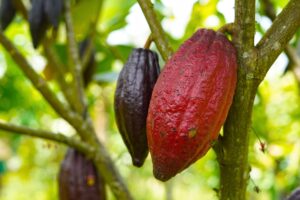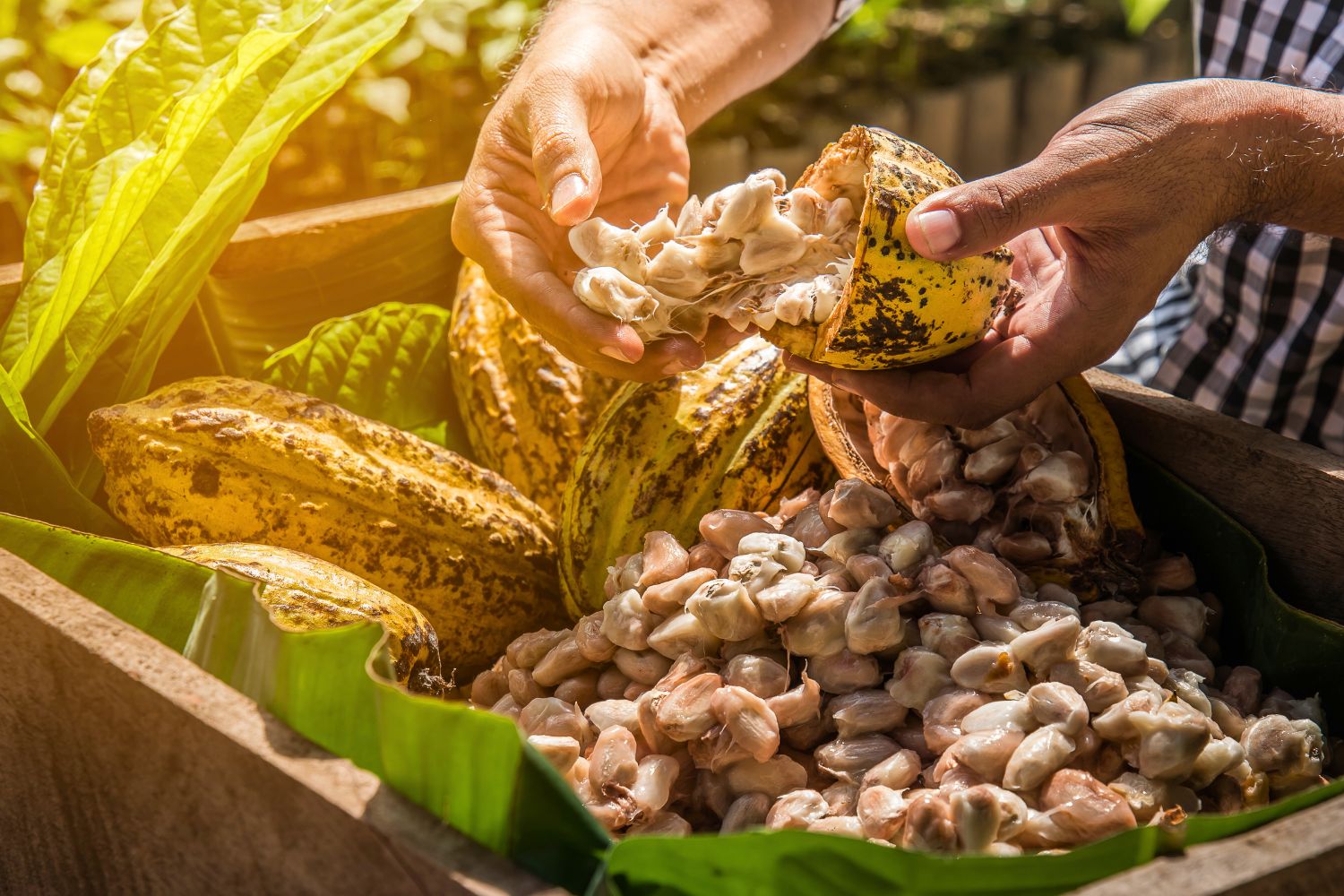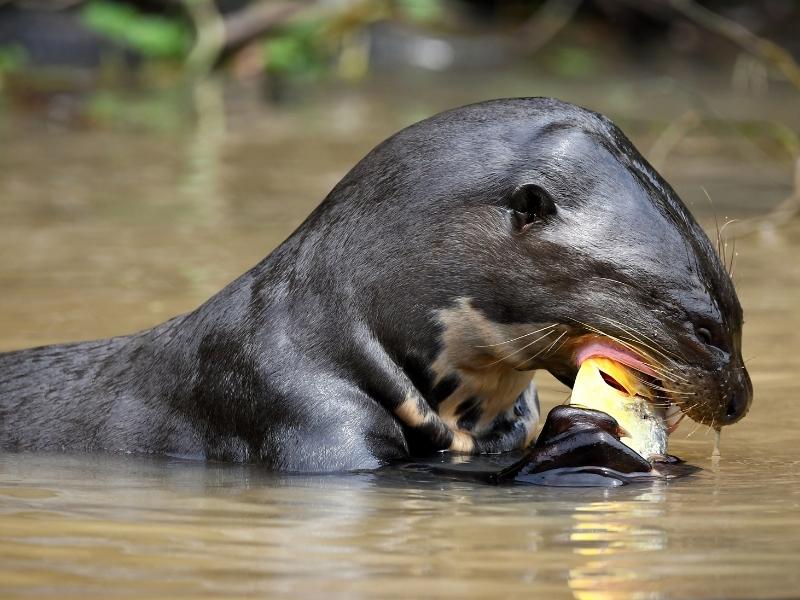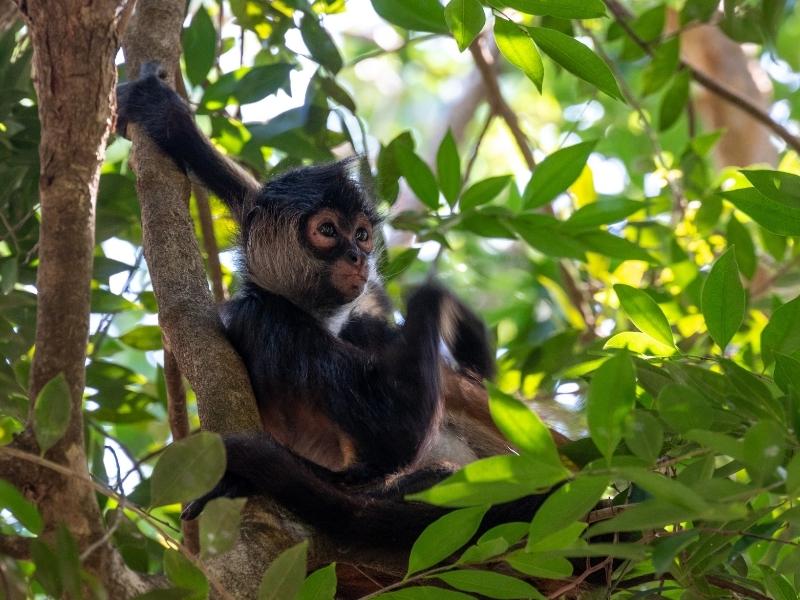
Peru ist das Land mit der größten genetischen Vielfalt auf dem Planeten und verfügt über 60 % der bestehenden Kakao-Biodiversität. Aus diesem Grund ist peruanische Schokolade auf der ganzen Welt begehrt und wird bei zahlreichen Wettbewerben ausgezeichnet. Peru ist nach Ecuador der zweitgrößte Produzent und Exporteur von Spezialkakao weltweit; sowie der zweitgrößte Produzent von Bio-Kakao. In jüngster Zeit ist der Konsum von Gourmet- und Herkunftsschokolade gestiegen, weshalb auf der Verpackung immer häufiger die Getreideart, das Terroir und der Bauernhof, von dem sie stammen, angegeben werden.
In Peru werden drei Kakaosorten produziert: 15 % Trinitario, 85 % Amazonian Forastero und 5 % Criollo. Die peruanische Kakaobohnenproduktion nimmt seit zehn Jahren stetig zu und wächst jährlich um 12,6 %. Der Chuncho-Kakao aus Cusco stammt aus den Tälern der Konvention und gilt als einer der besten der Welt.
Sie wird im unteren Teil des Westhangs der Anden und im peruanischen Dschungel zwischen 300 und 900 Metern über dem Meeresspiegel angebaut. Die Hauptanbaugebiete sind Cusco, San Martín, Amazonas, Piura, Ayacucho und Junín, die 80 % der gesamten nationalen Produktion ausmachen. Unser Kakao hat sich zweifellos zu einem der hochwertigsten peruanischen Produkte der Welt entwickelt, genau wie Kaffee, und schafft in erstklassigen Schokoladenfabriken einen Mehrwert.
Andererseits wurde Peru von der International Cocoa Organization (ICCO) als ein Land qualifiziert, in dem Edel- und Aromakakao produziert und exportiert wird und 36 % der weltweiten Produktion dieser Art erreicht. Auch der peruanische Kakao hat in den letzten Jahren internationale Auszeichnungen erhalten und zählt zu den besten der Welt, weshalb einige der exklusivsten Schokoladenfabriken in der Schweiz, Belgien und Frankreich ihre Produkte aus unserem Kakao herstellen.
Der peruanische Staat hat einige Maßnahmen zugunsten des peruanischen Kakaos gefördert. Im Jahr 2012 wurde peruanischer Kakao zum Naturerbe der Nation erklärt und damit als eine der wichtigsten Nutzpflanzen Perus anerkannt. Darüber hinaus erklärte MINAGRI jedes Jahr am 1. Oktober den „Tag des Kakaos und der Schokolade“.

There are records that indicate that chocolate was already consumed almost 4,000 years ago in America, although it was only drunk and was a bitter drink. The grains that fell from the trees, fermented, were collected, roasted, and from them a drink was extracted at the that many centuries later began to be mixed with honey and vanilla.
The word cocoa derives from the term „cacahuatl“ from the Mayan and Aztec languages, for the former it was a symbol of physical vigor and longevity, also using it for therapeutic purposes. Due to its effects, Mayan doctors prescribed the consumption of cocoa as a stimulant or tonic for warriors. But the origin of cocoa is not precise, it is said that it came from Mexico to South America and other theories say that it spread from South America to Mexico, but what is clear is that they consumed the fruit and not the seeds from which the chocolate is made. . In some cultures they consumed fermented cocoa drinks, being portrayed in some ceramics.
Cocoa entered Europe through Spain in the 16th century at the hands of Hernán Cortés, and it began to be drunk there sweetened with sugar cane and cinnamon. Here, too, it was a luxury reserved for few. The Spanish managed to keep it a secret for a century, until King Philip III’s daughter married Louis XIII in 1615 and the cocoa found its way to the French court, from where it spread throughout Europe. One of the most famous fans was Marie Antoinette, who used to always serve it at Versailles.
In 1828, Coenraad Johannes van Houten, a Dutch chemist invented a press that extracted cocoa butter from the beans, revolutionizing the industry. This is how the first chocolate bars were born. In 1870, in Switzerland, Daniel Peter invented milk chocolate and kickstarted the Swiss chocolate industry, one of the most famous in the world.

Chocolate is a food that is highly energetic or has a high caloric density, which is why it is recommended in situations that require a concentrated energy intake, such as in the case of athletes.
Due to its high caloric content, all chocolates are considered stimulant due to their major alkaloid, such as theobromine (caffeine metabolite). Dark chocolate, has a higher cocoa content and therefore greater energy power, it is attributed to the stimulation of the production of endorphins, which produce a feeling of pleasure in the body; and serotonin, which acts as an antidepressant. It should be noted then that scientific findings are increasingly about its positive impact on health.
Apart from fame for its flavor, its nutritional value has been studied, which is based on cocoa, such as milk or nuts. It has important properties such as its antioxidant effect, preventing many cardiovascular diseases, beneficial for the body’s immune system and prevention of neurodegenerative diseases, promoting memory, learning and cognitive function, as well as chronic diseases; although there is still insufficient evidence to say that it prevents some types of cancer mortality. What is certain is that more and more studies indicate greater beneficial effects than harmful ones.
Other benefits of consuming Peruvian chocolate:
Despite the many benefits of cocoa, it must be taken in adequate amounts if you want to avoid possible side effects. Thus, for example, it is not recommended in cases of suffering from high blood pressure and nervousness, because cocoa contains traces of caffeine that can worsen this situation. Also, due to the presence of tannins, active ingredients with astringent properties, its intake is not recommended in cases of constipation and hemorrhoids.

· It takes a year for the cocoa tree to produce the beans needed to make 10 bars of chocolate and its useful life is 25 years.
· Peru is also one of the few countries where white cocoa is grown, which was highlighted as the Peruvian jewel.
· More and more chocolate is consumed in the world, but climate change is seriously affecting the industry and if it does not take precautions in the short term it faces its possible extinction.
· It is estimated that currently close to 50 million people live from the cocoa industry. In Peru, 90,000 families contribute to the production of 193,000 hectares of cocoa.
· In the world, more than 3 million tons of cocoa beans are consumed per year.
· Only 5% of the total cocoa beans, worldwide, is used to make „specialty“, gourmet or high-quality chocolates.
· Chocolate handles a range of 500 different flavors, while wine only has 200 descriptors.
· Chocolate melts at 33.8º, a little below the average body temperature of the human body, which is why it melts in the mouth.
· Both the cosmetic and pharmaceutical industries use cocoa butter to make certain products such as suntan oils, soaps, creams and other products.


Entdecken Sie den majestätischen Amazonas-Regenwald des Manu-Nationalparks. Dieses Schutzgebiet befindet sich in Peru und ist aufgrund seiner großen Vielfalt an Vögeln, Insekten, Pflanzen und Säugetieren eines der größten Ökosysteme der Welt.


Die Manu Jungle Tour führt zu einem der größten Biosphärenreservate der Welt. Sie werden die Tierwelt und die traditionellen Dörfer mit den besten spezialisierten Führern genießen.


Der Manu-Nationalpark ist eine hervorragende Möglichkeit, eine intensive Amazonas-Tierwelt zu erleben. Ist der größte tropische Dschungel Amerikas, sein unvergleichlicher natürlicher Reichtum beherbergt die größte Flora und Fauna der Welt.
